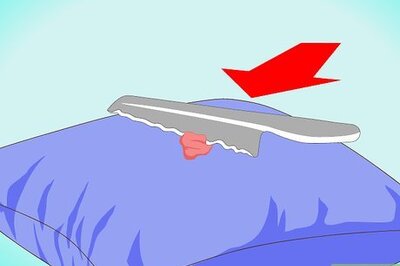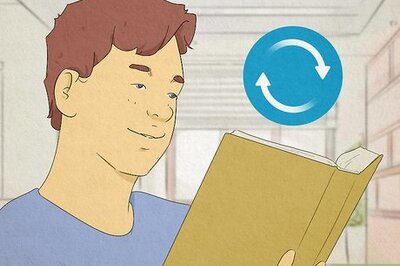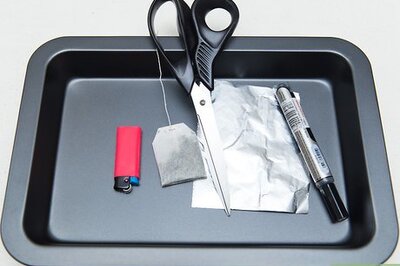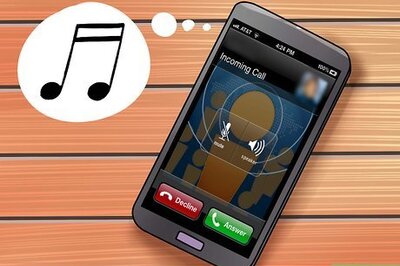
views
What is rib flare?
Rib flare is a condition where the lower ribs protrude outward. Mild cases can be caused by poor posture or muscular imbalances and may be corrected with stretches, exercises, or physical therapy. But if the rib flare is more pronounced, it could indicate that a person’s rib cage is growing abnormally, and medical treatment may be required. Rib flare can occur on one or both sides. If you have a rib flare, you may also notice other postural issues when you sit or stand, like your shoulders rounding forward and your chest caving in.
What causes rib flare?
Poor posture can lead to rib flare. If you have a tendency to sit hunched forward or you frequently lean to one side while you’re sitting, your ribs may sit in a position that’s unnatural. Over time, you may notice the bottom of your ribs flaring out as a result. Other postural issues that may lead to rib flare include: Anterior pelvic tilt, where the pelvis tilts forward Forward head posture, where the head sits too far forward Upper crossed syndrome, or tightness in the chest muscles Scioliosis, which is a sideways curve in the back Thoracic kyphosis, or a hunched back
Some people notice rib flare after pregnancy. During pregnancy, the rib cage may widen significantly to make room for the growing baby. After pregnancy, the bottom of the rib cage may appear flared out as a result of these changes. If rib pain bothers you during pregnancy, stretching may give you some relief. Wearing a supportive bra that fits you well may also help relieve some pressure on your rib cage.
Rib flare can occur if you carry a lot of weight in your midsection. Excess weight can put strain on the abdominal muscles, which can weaken them over time. As the abdominal muscles weaken, the ribs may spread, causing them to look flared. The rib flare may appear most obvious when the person gains or loses a lot of weight.
Muscle weakness or tightness can contribute to rib flare. If your core muscles are weak, your abs may not properly support your rib cage, allowing your ribs to spread and flare out. On the other hand, if you have muscles that are too tight, like in your shoulders, back, or chest, that tension can cause you to hold your posture in a way that makes your ribs look flared out. If a muscular issue is causing your rib flare, stretches and exercises will likely be the most effective treatment.
Injuries can sometimes lead to physical imbalances that cause rib flares. If you suffer a trauma to your chest area, like a serious fall or a blow to the chest, your body may heal unevenly. For instance, you may have scar tissue or excess tightness on one side of your chest, which can cause postural issues that then lead to rib flare. If you’re inactive for a long time after your injury, try to practice good posture as much as possible to prevent rib flare.
Some people are born with a condition that causes rib flare. Certain abnormalities can lead to rib flare—primarily pectus excavatum, a condition where the sternum grows inward. This can make the chest look dented in the middle, and the ribs may flare out at the bottom. Pectus excavatum usually appears during childhood or adolescence. Mild cases of pectus excavatum may be treated with a vacuum bell device, but if the condition is severe enough to affect the heart or lungs, surgery may be required. Pectus carinatum, sometimes called pigeon chest, may also cause the ribs to flare outward. It’s often treated with a chest brace.
Stretches and Exercises for Rib Flare
Lie on your back with your knees bent and draw in your stomach. Breathe deeply, and imagine pulling your ribs down into your spine. Hold that for a few seconds, then release. Repeat this 8-10 times, up to 3 times a day. As you get comfortable with this, make the stretch more difficult by lifting your arms over your head. Make sure to keep your back flat throughout the exercise. Once that feels easy, level the stretch up again by lifting your arms over your head and holding one or both legs up.
Do curls to strengthen your ab muscles. Lie on your back and bend your knees, then place one hand on your stomach just below your rib cage. Contract your abs until your head and shoulders come off of the floor. Hold this for about 5 seconds, then slowly lower yourself to the floor. Repeat this exercise 10 times. Because weakened ab muscles may allow the ribs to spread, strengthening your core may help correct the flare over time. Try other core-strengthening exercises like
Relieve pressure with overhead side stretches. If rib flare is causing you discomfort, raise one arm over your head, then bend sideways toward the opposite side. Hold this for a few seconds, breathing deeply, then repeat on the other side. If the pain is more noticeable on one side, spend more time stretching away from that side. For instance, if you feel the pain on your left side, lift your left arm and bend sideways to the right. This can be especially helpful if you’re experiencing pain due to rib flare during pregnancy.
Try a cat-cow stretch to relieve tightness in your back. Start on your hands and knees, with your hands flat on the floor under your shoulders and your back in a neutral position. Inhale deeply, arching your back and lowering your stomach as you lift your head. As you exhale, tuck in your chin and round your back. Repeat this move 10 times.
Try arm wall slides to improve your shoulder flexibility. Stand about 1 ft (0.30 m) in front of a wall. Place a small towel on the wall, then place one hand flat over the towel. Slide your hand upward as far as you can without your ribs moving out of place, then lower your hand. Repeat this 10 times, then switch to the other hand. Over time, see if you can improve how high you can lift your hand without moving your ribs. You can also do this exercise with both hands.
Try physical therapy for personalized tips on improving your posture. If you’re struggling to correct rib flare, a trained physical therapist may be able to help. They’ll evaluate your posture and movement and give you personalized exercises and stretches to work on any particular areas that might be giving you trouble. Physical therapy is a good option if you have a muscular imbalance, spine issue, or other physical issue causing your rib flare. If rib flare bothers you for aesthetic reasons, a physical therapist might not be necessary.
Tips for Preventing Rib Flare
Practice good posture, being mindful of your rib position. When you’re sitting or standing, keep your shoulders back and your head up, with your spine in a comfortable, neutral position. Pay special attention to the alignment of your ribs—if your back is arched in a way that pushes your ribs forward, make minor adjustments so your ribs are in the correct place. Also work to improve other postural issues that can contribute to rib flare, like not tilting your pelvis forward while you sit.
Try to keep your core engaged throughout the day. Your core muscles support your spine and rib cage and hold your body in the proper posture. Exercises like curls and planks can help strengthen your abs, but you can also improve your core strength by simply reminding yourself to engage your core muscles when you’re working, reading, or watching TV. Try setting reminders on your phone to help you remember to check your posture and engage your core.
Do deep breathing exercises to retrain your diaphragm. Put one hand on your stomach and breathe in as deeply as you can. Hold that breath for a moment, then slowly exhale. Repeat this as often as you’d like throughout the day. Shallow breathing may contribute to rib flare, so deep breathing exercises can help correct it.
Use massage to relieve muscle tension. If you think back, chest, or shoulder tightness could be contributing to your rib flare, massaging the area could help. You can try self-massage or ask a loved one to help, or you could see a professional massage therapist for more targeted relief. Because muscle tightness can pull your body out of alignment, relieving that tension can make it easier to keep your ribs in the correct position.
See a doctor for serious spinal or muscular injuries. If you’re experiencing back pain or serious muscle pain, talk to your doctor about treatment. If left untreated, these issues can throw off your posture, which can eventually lead to rib flare. Your doctor might recommend physical therapy or massage, or in some cases, corticosteroid injections or even surgery.




















Comments
0 comment